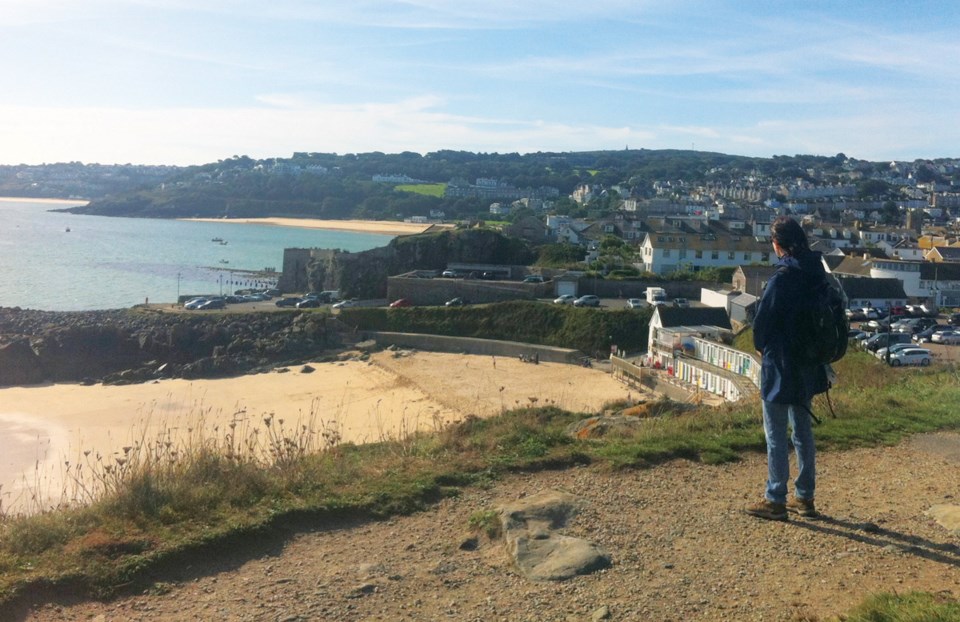“As I was going to St. Ives, I met a man with seven wives.” So goes the old rhyme. I went to St. Ives in Cornwall in September, travelling five hours by train from London to reach this remote corner of southwest England and enjoying the spectacular coastal scenery on the way.
I didn’t meet the seven wives but I did meet at least seven surfer dudes. Yup, surfing is a big attraction along Porthmeor Beach. It’s a wide sandy swathe open to rolling waves, making it attractive to dozens of wet-suited newbies in surfing school. Spectators can watch from the steps of the Tate St. Ives art gallery, the modern art outpost of London’s Tate galleries.
While the water may be too cool for swimming, my travelling companion removed her shoes and joyfully scampered into the breakers while we staid tourists looked on from one of the many hillside paths that surround St. Ives. Walking in the fresh Atlantic air is the thing to do in Cornwall and a series of cliffside trails winds around the coast to attract hikers. Some of the trails are easy walking like the one from St. Ives to nearby Carbis Bay (with return journey by train for weary walkers), while others such as the path from St. Ives to Zennor are rugged.
One lovely scenic walk within the town’s environs is the path up to what locals call The Island. It’s actually not an island but a high promontory with a rough path to the summit where a stone chapel stands. The St. Nicholas chapel is named after the saint of sailors and it looks out over the sea. It’s not known when it was first built – it could have stood since the 15th century though when it fell into the hands of the War Office they tried to pull it down, causing an outcry from the townspeople. It was restored in 1911 and again in 1971 and came under the protection of the local churches. Now it is a popular site for weddings. I imagined the wedding party wheezing up the hill on foot, ruining their dainty shoes, until I saw a dirt track that would allow cars to carry the bride and groom.
If you’re looking for something less athletic, then enjoy half a dozen small galleries with work by local artists. The Cornwall light has always attracted artists and in the 1950s the area became a creative enclave where many flocked to do pottery or painting.
The accommodation at the Cohort Hostel (50 pounds sterling a night) is situated next to a theatre, while across the street a cinema shows the latest films and is an easy walk from there to an Indian restaurant. The Queens Hotel on the High Street serves typical tasty pub food: beef stew with dumplings or ploughman’s lunch that includes ham and cheese with four kinds of pickles served with a glass of local brew. I tried the St. Ives gin said to include 13 botanicals and noticed a slight scent of oregano.
Down along the harbour the tangy aroma of freshly caught fish fills the air and many of the restaurants serve cod or haddock and chips. If it’s a nice day you can sit out on a bench by harbourside with a Cornish pasty in hand. This traditional centuries-old fast food includes meat, potato and swede (also called rutabaga) in a heavy pastry. Eat, hike, surf, enjoy art – St. Ives has it all.



